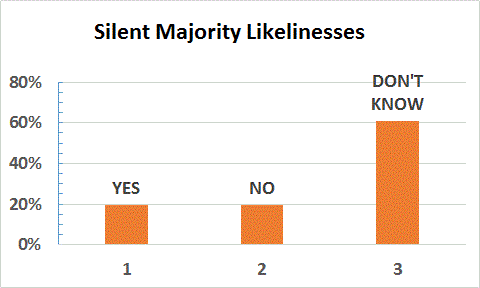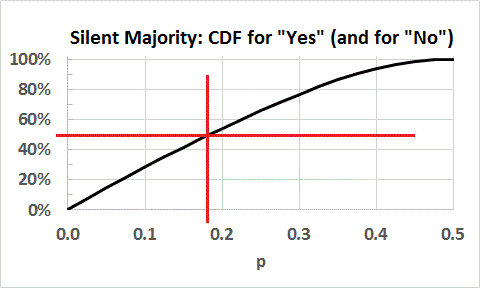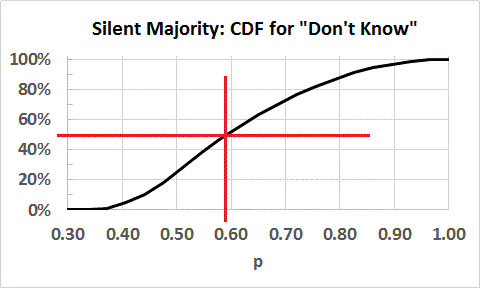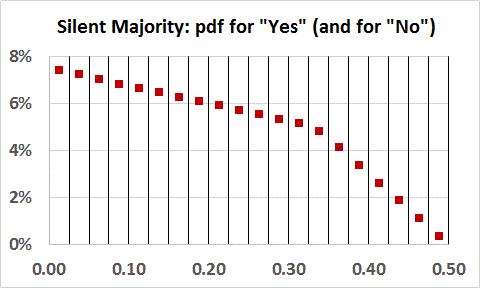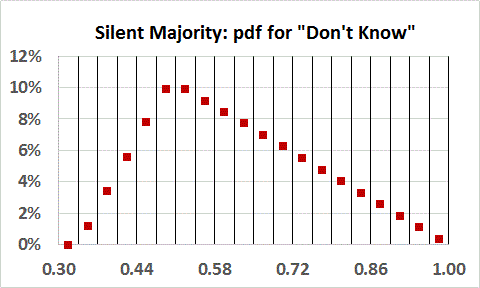Lovegrove Mathematicals
"Dedicated to making Likelinesses the entity of prime interest"
Lovegrove Mathematicals
"Dedicated to making Likelinesses the entity of prime interest"
In questions which can be answered "Yes", "No" or "Don't know", two situations commonly arise:
To analyse Silent Minority questions, use the step-down underlying set SD(2,3), with "3" representing "Don't know", and "1" and "2" representing "Yes" and "No" in either order.
Since LSD(2,3)(3)=LR(3)(3)=1/32=1/9=0.11, we have:
This histogram shows the likelineses, ie. the average values of Pr(1|f), Pr(2|f) and Pr(3|f).
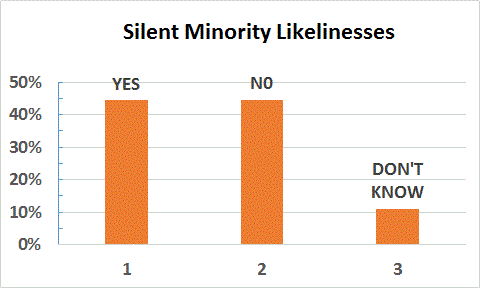
To see how the values of "Yes", "No" and "Don't Know" vary, Great Likelinesses calculates their CDFs as the following [that for "No" is identical to that for "Yes"]. The red lines identify the median.
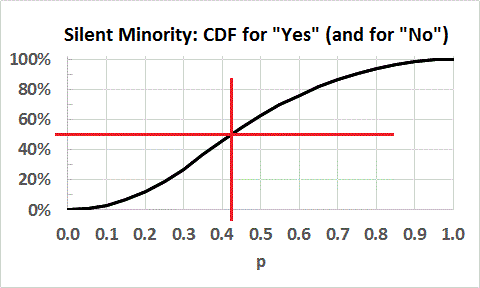
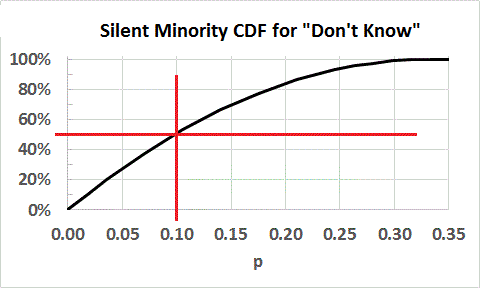
In both cases, the median is less than the likeliness, ie the median is less than the mean. This is because of skew, as shown below.
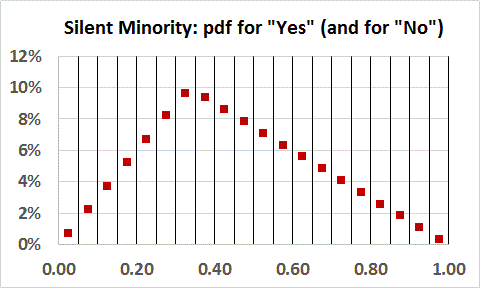
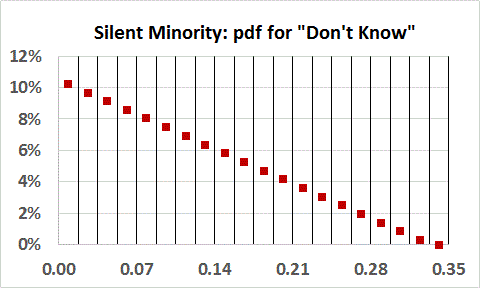
To analyse Silent Majority questions, use the step-up underlying set SU(2,3), with "3" representing "Don't know", and "1" and "2" representing "Yes" and "No" in either order.
Since LSU(2,3)(3)=LSD(1,3)(1)=LR(3)(1)=0.61, we have:
